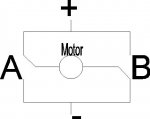This year, my wife started a FIRST robotics team for home schoolers and I am the mentor programmer (my two sons and daughter are on the team as well). As a rookie team, we are unlikely to finish the actual robot with much time to spare, since we only get six weeks. Without the robot, we can't test any software, and for autonomous mode we might try to implement some ultrasonic sensors, which mean signal filtering and a fairly complex algorithm for navigation.
It might just be possible to build a smaller model of our robot and test out the ultrasonic sensors using a picaxe18. It would need to control two motors and up to three ultrasonic sensors and maybe one or two other sensors.
I am looking at gearboxes and motors. I don’t need a “Low-voltage motor controller” do I? I think the picaxe can do that.
Thanks for any advice, tips, or helpful suggestions.
I have had the pleasure of completing two picaxe08 projects, a biofeedback "hand warming" trainer and a ECS (electro cranial stimulation) unit with help from this board. This truly proves that with the picaxe, anybody can do it!
It might just be possible to build a smaller model of our robot and test out the ultrasonic sensors using a picaxe18. It would need to control two motors and up to three ultrasonic sensors and maybe one or two other sensors.
I am looking at gearboxes and motors. I don’t need a “Low-voltage motor controller” do I? I think the picaxe can do that.
Thanks for any advice, tips, or helpful suggestions.
I have had the pleasure of completing two picaxe08 projects, a biofeedback "hand warming" trainer and a ECS (electro cranial stimulation) unit with help from this board. This truly proves that with the picaxe, anybody can do it!

